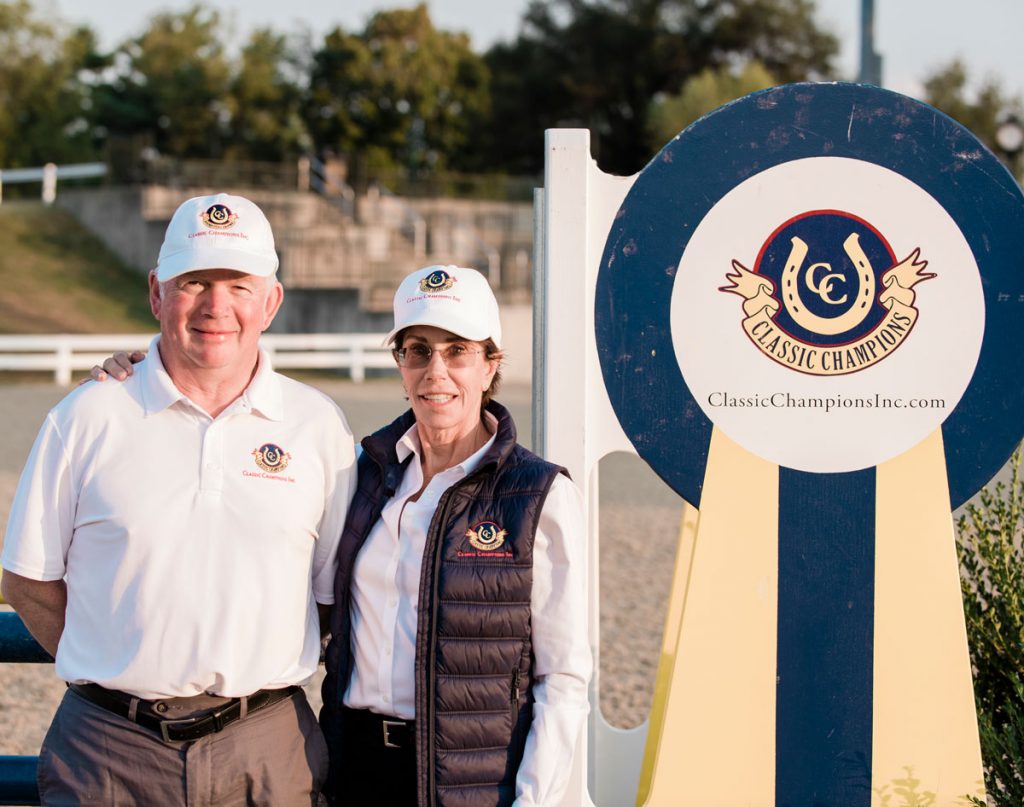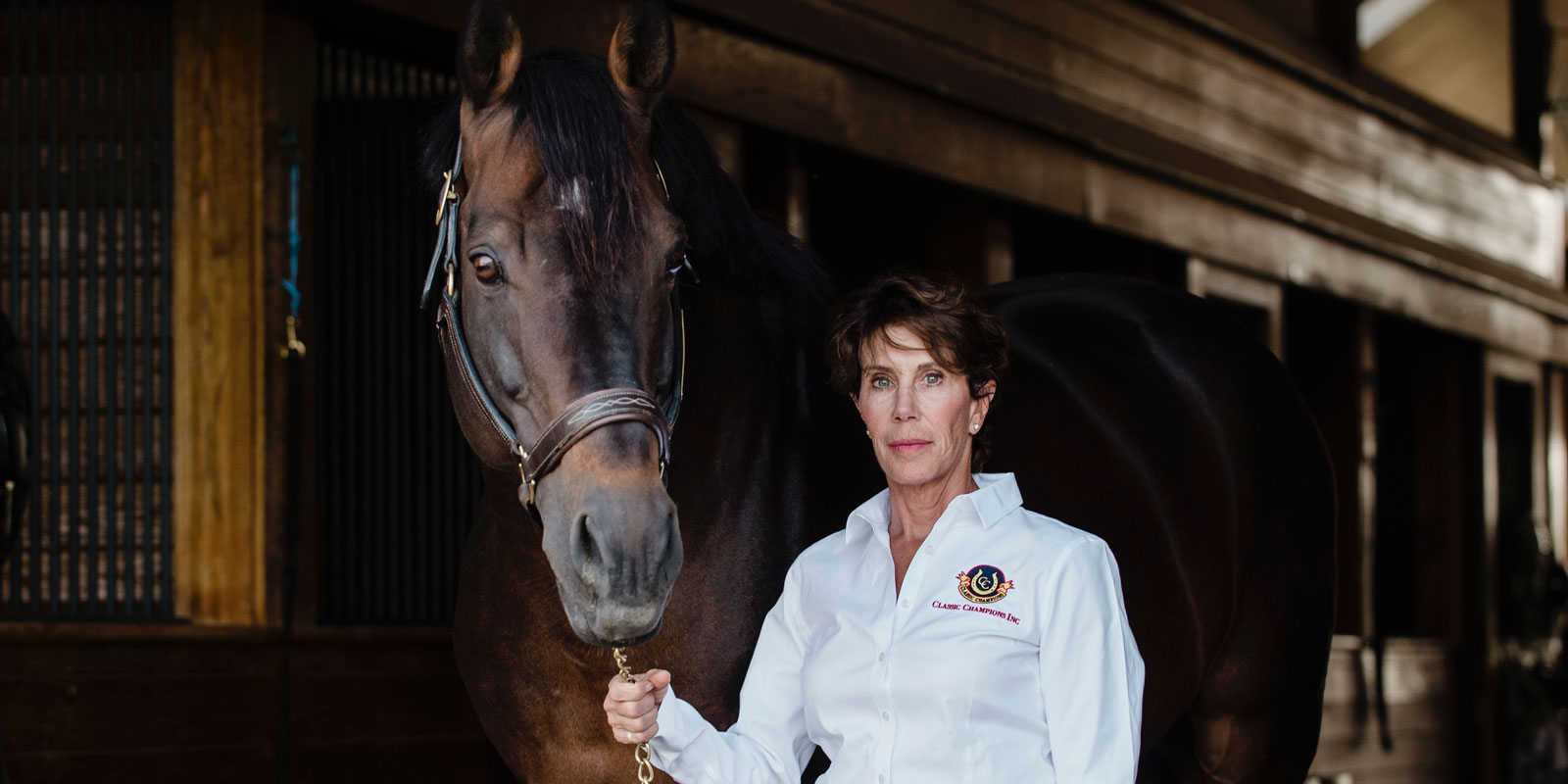Cynthia Hampton’s joie de vivre is driven by her passion for young jumpers. It began when she lived in France. A top equitation rider from Portland, Oregon, she moved to Paris in 1977 after graduation from Stanford University. She landed a job as an assistant to iconic avant-garde fashion photographer Deborah Turbeville and launched her 20-year Parisian photography career with a 12-page spread for Harper’s Bazaar, Milan.
Fashion photography by Cynthia Hampton:
[portfolio_slideshow id=11525]Cynthia trained with Cristophe Escande at a farm outside of Paris near Dreux. She observed how Escande brought along the youngsters and his strategy for competing them. She said that competing in France, compared to competing in the U.S., was like night and day. The standards in France were much more regulated.
“We were not allowed to show unless we passed seven exams,” Cynthia said. “The final exam involved riding a cross-country course, a stadium jumping course, a dressage test, an oral and a written exam. We had to know how to take apart a double bridle, put it back together and understand how to use it. We had to have an understanding of nutrition, basic care, and some knowledge of morphology and pathology.”
In Europe, the young horse divisions focus on education. The horses are separated by gender and the courses are tailored to the age of the horse.
“They start with 4-year-olds, encouraging the horses to go forward over small natural obstacles,” she said. “They make it fun. They emphasize the relationship between the rider and the horse. At 5, competition becomes progressively more technical. The 6-Year-olds jump the open water all three days. The Final feels like Aachen!”
Cynthia explained that the system was structured to reveal the talents and qualities of the horse. It brought clarity to the horse’s career path– whether it was targeted to be a championship horse, an amateur’s horse, or somewhere in between. The competitions were inexpensive and the federation rules protected the horse by limiting the courses per day and consecutive days they could compete.
In 1997, Cynthia returned to the U.S. She was surprised at how the horse show world had changed.
“In Europe, the horse is the center of the picture,” she said. “In America, the client is the center of the picture. The trainers and clients are bound up in a kind of race to get points so that they can qualify for various championships.”
Many shows offered young jumper classes. Cynthia said that many of those included courses that emphasized speed and the parameters of grand prix classes instead of focusing on education and development.
Cynthia founded Classic Champions in 2015, a nonprofit to build a structure around young jumper competition. She focused on supporting young jumper series at shows like The Ridge, Old Salem Farm, Palm Beach Masters, and a series and final at the Kentucky Horse Park. She brought in FEI course designers that specialize in young jumpers, including Frédéric Cottier, Michel Ismalun, and Tom Holden. Holden, an Irish FEI 3* course designer who has built for the Irish Young Horse Championships for 16 years, joined Cynthia to serve as the vice president of Classic Champions.
During the winter season in Wellington, Cynthia partnered with Gabriel De Matos Machado and Rogerio De Goes at Wellington Equestrian Center to produce a well-attended educational event. The afternoon featured Olympian Joe Fargis coaching top young horse riders and talented young jumpers. Commentary was provided by a panel of experts that included Lisa Lourie owner and breeder from Spy Coast Farm’s, top Irish professional Paul O’Shea, breeder Tom Grossman from Blue Chip Farms and equine behavior ecologist Mary Ann Simonds. Cynthia is planning more events for next year.
When the coronavirus cut winter competition short, she reached out to important voices in the equestrian world. She wanted to get their take on how the situation was affecting the industry and specifically young horses. She had interesting conversations via Zoom and social distancing on camera with Equestrian Sport Productions Michael Stone, DiAnn Langer, Classic Champions’ Ambassador Eric Navet, and others and posted them on her website and on the Classic Champions Facebook page.
Currently, Cynthia and Tom Holden are working on adjusting the Classic Champions young jumper division format for this year. They are taking into account the competition time young jumpers missed due to the coronavirus show cancellations.

“I hope to see the development of young horses become a priority,” Cynthia said. “We have a good start with the efforts of USHJA’s Developing Jumper Task Force. It’s, such an untapped front for aspiring professionals. I also think there is a great opportunity for developing a young jumper division throughout the United States in which the parameters reflect the European type of courses where everything is constructive.”

